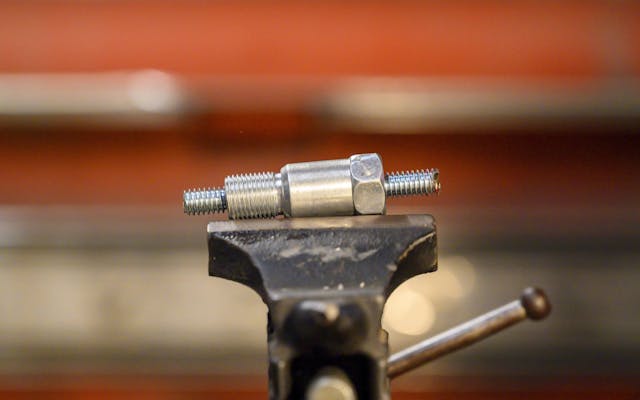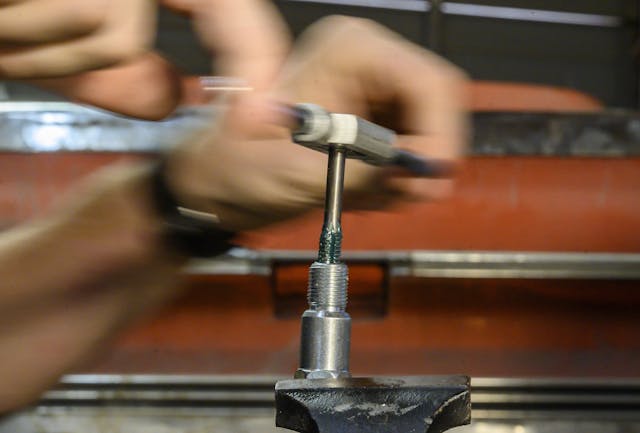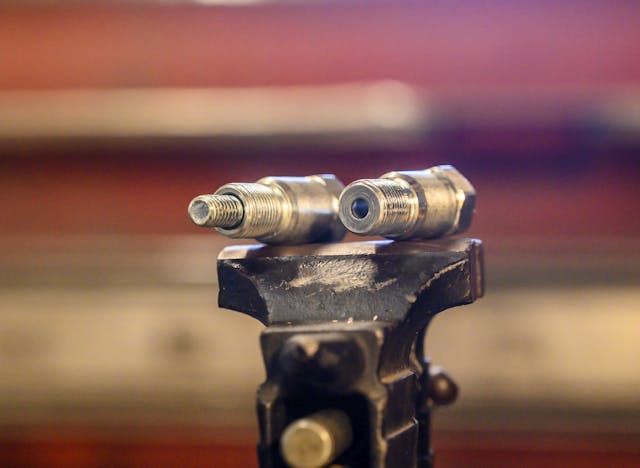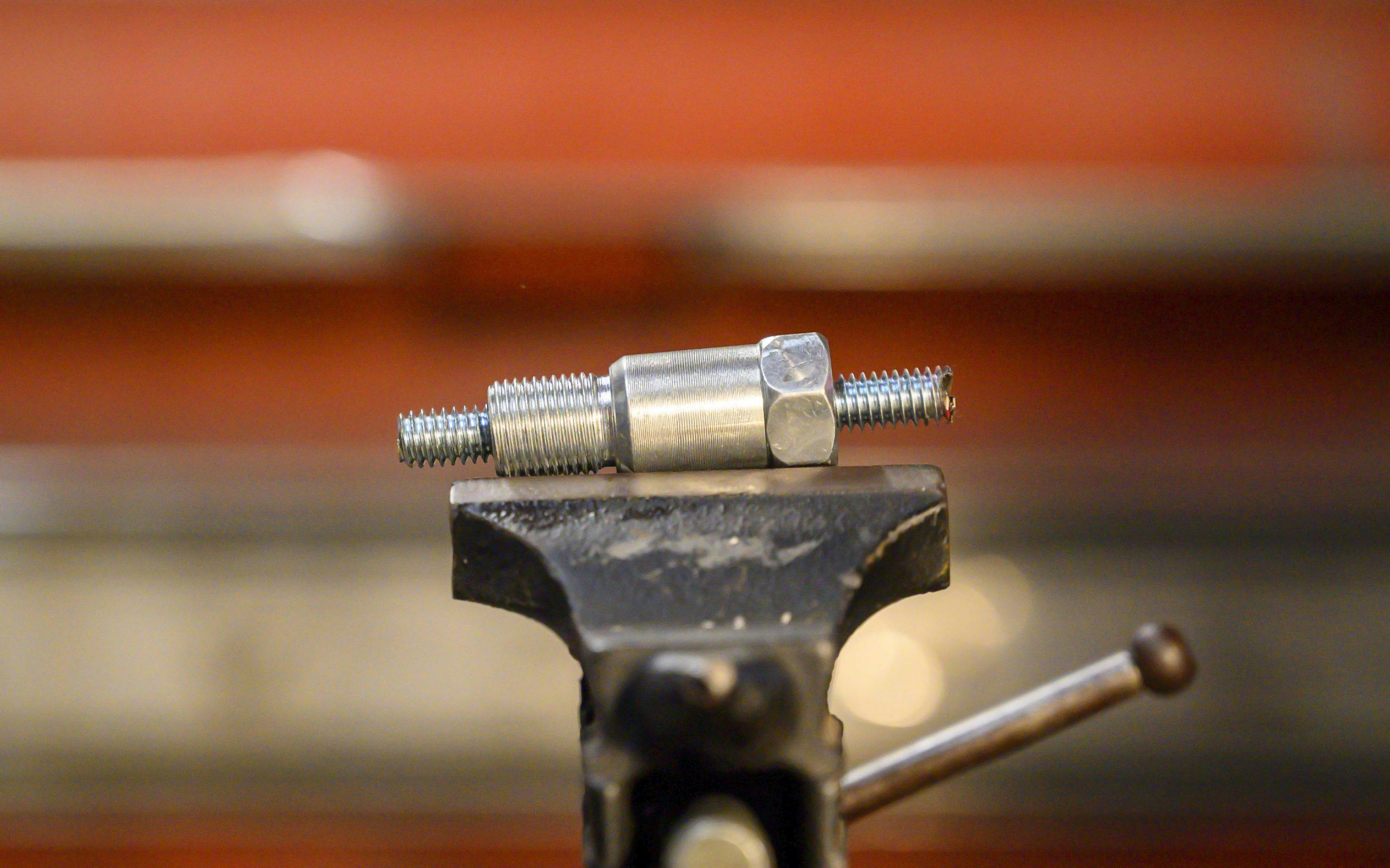Media | Articles
Wrenchin’ Wednesday: How to build a DIY piston stop for $5
Setting Top Dead Center (TDC) is a major step during engine work as it is the point at which all mechanical events are timed to. TDC refers to the point in the crank’s rotation where a piston is at the peak of its stroke, and everything about the timing of the valvetrain, ignition, and fuel system is referenced on the TDC of cylinder no. 1. There’s a myriad of ways that you can find TDC, but the quickest way to use a piston stop so that you can accurately, and consistently, find the top of piston no. 1’s travel without having to remove the cylinder head itself.
Today we’re going show you how to build a quick and cheap piston stop using a generic spark plug anti-fouler, which costs under $5. These tools can be found online and in many speed shops, but are becoming less common in local parts houses, so we’ll dive right in on a DIY solution!
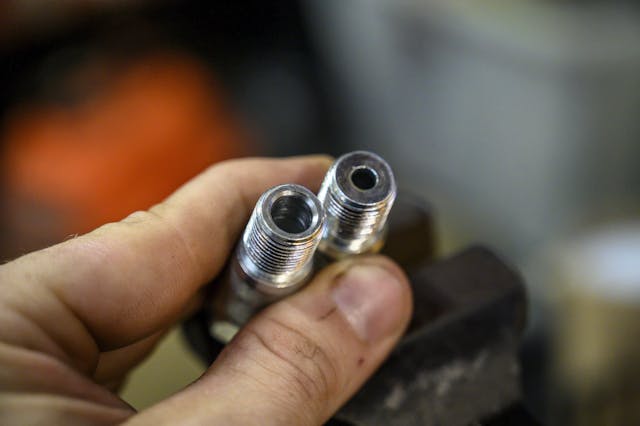
Spark plug anti-foulers are normally used as their name implies, they move the tip of the spark plug out of the combustion chamber in order to prevent it from being blasted with oil and carbon from a worn engine. For us, though, they provide the body of our tool complete with all the features we want already machined into the part: the correct threads for the cylinder head, a hex head to make install and removal painless, and the center bored out for our adjustable stop.
First, we’ll drill out the small hole on the bottom of the anti-fouler to pass the adjustable stop through. We’ll be cutting threads into this hole later, so the final diameter you drill too should reflect the size of hole needed for the tap. For our 5/16-18 threads, we ultimately drilled the anti-fouler out to 17/64ths.
Next, we took our tap and cut threads into the throat of the anti-fouler. Nothing fancy here, just work slowly and use judicious lubricant if undue friction is felt.
Marketplace
Buy and sell classics with confidence
The adjustable stop can be any hardware that fits inside of the anti-fouler, so buy the anti-fouler before your hardware to ensure that it’s approximately an inch longer than the anti-fouler so that it can reach the piston once installed. For this small-block Chevy anti-fouler, we used a short piece 5/16-18 all-thread and cut it to length. Because we didn’t use a screw or bolt, we notched the all-thread too so that it could be spun by a flat-blade screwdriver to adjust the stop’s position.
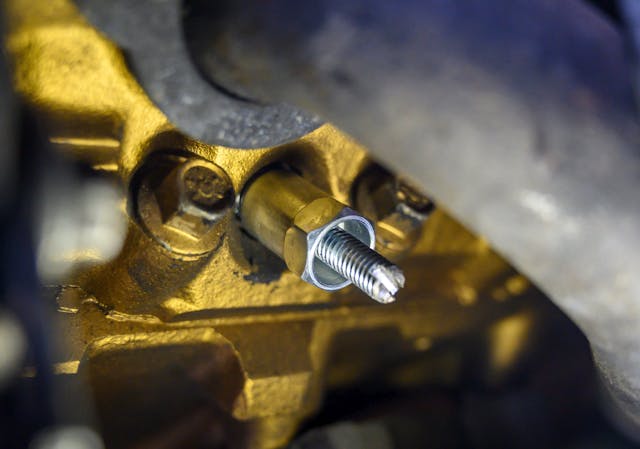
And that’s it, for $5 and about 15 minutes of work, we have a piston stop for measuring TDC. The idea here is that you bring cylinder no. 1 to its compression stroke, which you can feel by placing your finger over the spark plug hole while rotating the engine — you’ll know when the piston is on its compression stroke once you feel pressure starting to build. Install the tool with the end of the adjustable stop protruding approximately a half-inch into the combustion chamber. Next, slowly rotate the crank until the piston gently contacts the stop, and make a mark on the balancer. Now, spin the crank in the opposite direction until it once again contacts the piston stop, and make a second mark on the balancer. Directly in the middle of these two marks is your TDC for cylinder no. 1, the 0-degree mark for your crank position.
